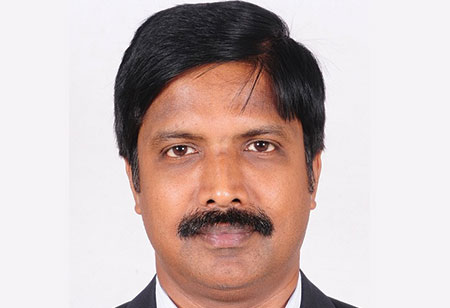Humans as Capital – Where Is HR Headed
By Bijumon Jacob, VP & Head of HR, Temenos

Bijumon Jacob, VP & Head of HR, Temenos
Even the far pledged artificial intelligence solutions and robotics have not reached a level to dethrone the pride of place occupied by the Human capital of an organisation. Given the prominence of knowledge industry today, people are the most important asset of any organisation. Why do we refer to people as capital? While resources are means available or an available supply that can be drawn on when needed from within or outside – until it is exhausted, Capitalis any form of wealth that is employed or can be employed in the production of more wealth. Capital can grow with well thought out investment to produce more capital.
Thus looking at people as a capital that is worth investing in brings to the fore the role of Human Capital Management in contrast to resource management. The focus shifts from augmentation and acquisition to enhancement of people capabilities in line with business strategy in the new definition of People management. It is no brainer that hiring and training a new hire is more time consuming and costly than investing and retaining high performing employees.
While this is a welcome trend across the world, it had its origins in countries with aging population and limited pipeline of capable new comers. The labour market in the US and some parts of Europe are now face to face with the fact of limited supply of skilled people from within the country. Hence, the need to invest and retain the existing employees.
HR as a function has traditionally been viewed as transactional and bureaucraticmostly because of its obsession with processes, programs, controls and systems. While these forms basis of operational efficiency and is a hygiene factor for any organisation, the function as such needs to grow beyond these into its rightful role of leveraging the most important asset of the organisation to deliver what they care capable of. People strategy, thus, will have to be directly aimed at enabling this capital to perform at its optimal level. Adding to this is what good HR leaders have always brought on board - talent assessment, leadership development, change management and organization effectiveness. We have been successful in automation and system adoption to ensure most of the HR services are delivered flawlessly or at least with minimum interference.
Human Capital Management has the responsibility to identify opportunities to develop the existing employees and build a convincing case of investment that can unlock and create value to the Board and be held accountable for delivering palpable results. It might also means bringing in new people from outside to act as a catalyst for positive change as part of strategic hiring.
Engagement takes an enhanced meaning in this context. It starts with increasing the efficiency, productivity and overall usefulness of employees through effective interventions in a way that the employee and the company not only benefit but perceive as value addition.
It is also about helping the employees find their strengths and providing required resources to maximize them. Engaging them to look at areas of improvement and be enthusiastic in overcoming them is another step. Organisation should not only focus on helping its human capital sharpen their sword and smoothen rough edges, but actively create an environment that is conducive for people development.
It is the Human Capital department’s responsibility to ensure that there is a positive and engaging flow of two way communication between the employees and leadership and the same is perceived by all as adding value in the form of transparency and communication. Often our surveys and employee connect programs fail to live up to that standard. So running a massive survey is not the task at hand but what we do with what the survey provides us that will decide the level of engagement.
When you look at Managing people as Human capital, the compass also expands from the traditional measurement of HR in terms of efficiency of HR practices– cost per hire, time to fill, cost per training, service delivery standards – to the effectiveness of HR interventions. Does the training result in learning or even better performance? If we change our performance management program, do people do a better job of performance management or does it contribute to higher motivation level among employees to do better?
The success of Human Capital Management lies in enlisting all stake holders especially leaders outside the HR team in this endeavor. We should measure how good these leaders are at Human capital management and help them build that skill. People as assets is entrusted to the care of these leaders only to make sure that they enhance it to produce better returns for the organisation. How many of them can plan what their people should be capable of three years down the line and can partner with HR to create a roadmap for their development and dedicate time and effort to lead it to successful completion?
In today’s business environment, the role of Human Capital Management is more relevant than it ever was provided people leaders are ready to embrace this change and lead the change – making the best out of the assets entrusted to them for enhanced business performance. More than ever, it is the time for good HR leaders to stand up and be counted.




